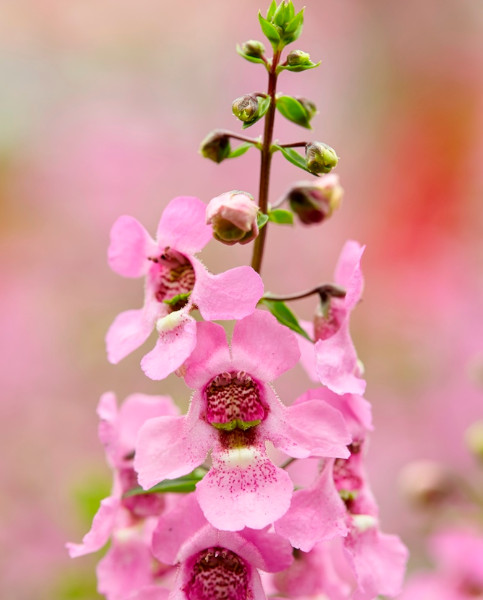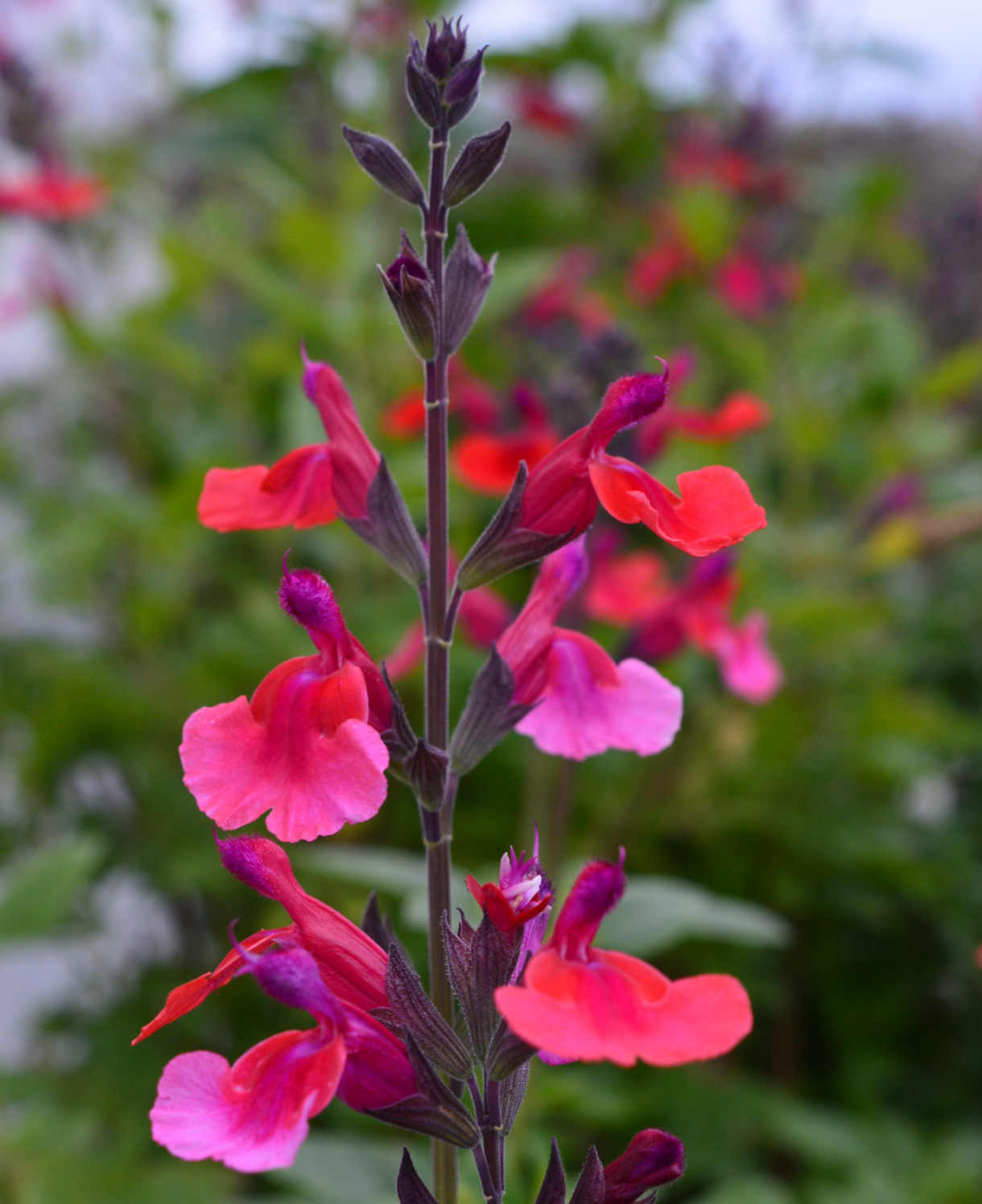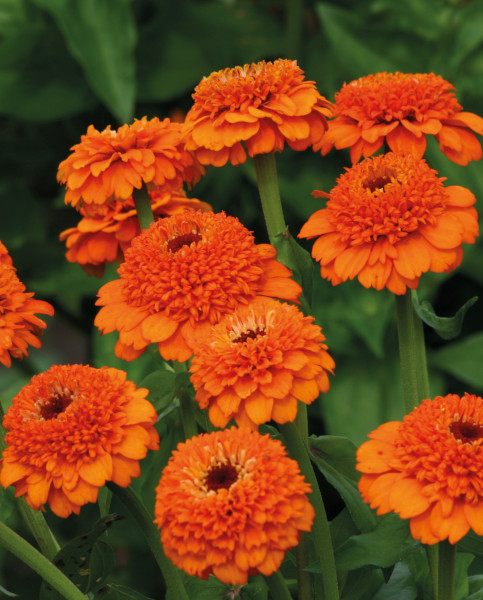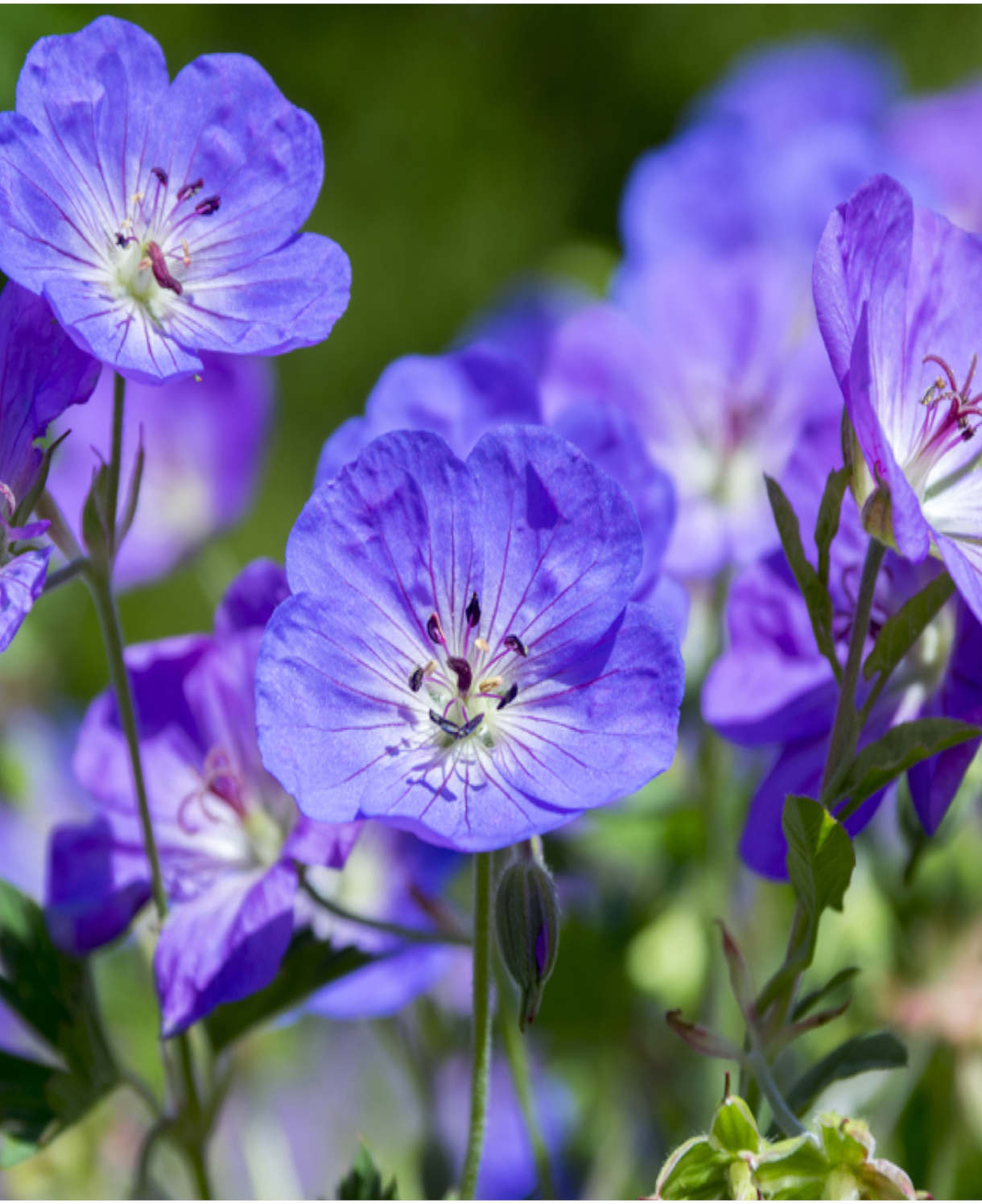How to grow Angelonia
Native to Central and South America, in the chillier climes of the UK this tender perennial is usually grown as annual bedding. Also known as ‘summer snapdragon’ or ‘angel flower’, it is popular for its abundance of flower spikes produced over an impressively long period from May to September. Thriving in heat and drought, this hard-as-nails plant makes a tough alternative to its lookalike the snapdragon, which will often pause flowering when summer temperatures get too high.
The flowers emit a sweet fragrance similar to vanilla or grapes – often more prevalent in the evening or on warm, dry days.

Key Information
Soil pH
Position
Hardiness


Where to plant Angelonia
Plant your angelonia outside once all risk of frost has passed in your area. This can vary depending on the region, though is usually around late May. If your young plants arrive before it is safe to plant them out, the best practice is to pot them up into 9cm containers using a well-draining compost mix and keep in a frost-free environment such as a greenhouse, conservatory, or sunny windowsill.
When the time comes, angelonia can be grown in the open ground in large drifts for a sea of colour or mixed with other annuals and perennials for a colourful summer display. They also make excellent container plants and are well suited to hanging baskets, window boxes, and mixed seasonal container displays.
How to plant Angelonia
- For planting in the garden, dig the soil area removing any large stones and weeds and breaking up any lumps. Mix in some organic matter such as manure or garden compost. If your soil is on the heavy side, now is also the time to add a generous helping of horticultural grit. Rake level and firm with your heels. Rake level again.
- Water plants well and allow to drain before planting.
- A good tip is to dig a hole twice the size of the root-ball. Fill with water and allow to drain before placing in the plant.
- Place the plant in the hole, ensuring the top of the root ball sits level with the surface of the soil. Too low and the plant may rot, too high and the roots can dry out.
- Backfill with soil and firm in gently with your foot.
- Soak well with water.
- Mulch around the base with well-rotted organic matter.
- For planting in containers, first choose an appropriately sized pot. You may wish to grow your angelonia on its own in a pot, or as part of a larger, mixed container display. Either way, ensure there are plenty of drainage holes in the bottom.
- If you are using a large or heavy pot, it can be a good idea to fill and plant it in situ to save yourself the trouble of moving once full.
- Use a good quality potting compost with some horticultural grit mixed in and, if not already present (check the labelling on the bag) some slow-release fertiliser granules.
- Start by partially filling the pot with compost; enough so that when placed on it the upper surface of the root ball is about 3cm lower than the top of the pot.
- Fill around the plant with compost, firming down with your fingers then adding a little more so it is held tight.
- Pick up the container and lightly tap on the potting bench or ground a few times to help further settle the compost around the plant.
- Soak well with water.
- A mulch with horticultural grit will look attractive and help to prevent a ‘cap’ or crust forming on the top of the compost (something container plants can suffer due to the artificial nature of their watering).

What to plant with Angelonia



How to care for Angelonia
Pruning and Deadheading
Pinching out the growing tip of your young plant when it arrives can promote bushier growth. Simply snip off to a healthy set of buds slightly lower down.
No deadheading is required on this naturally floriferous plant.
Angelonia is usually treated as an annual, meaning once flowering has finished it is simply removed to the compost heap.
Watering
Angelonia in the ground should be watered regularly for the first few weeks, and then in any hot, dry weather after this.
Angelonia grown in a container requires regular watering as it has less access to moisture and can dry out very quickly, particularly in warm weather. To avoid overwatering, a good rule of thumb is to allow the top couple of centimetres to dry out between soakings. To check this, wiggle your finger down into the soil/ compost until you feel moisture.
Feeding
Usually, we advise fast-growing bedding plants be given plenty of additional nutrients to power their performance, however, angelonia is the exception this. Being a relatively light feeder it will produce an excess of foliage at the expense of flowers if given too much richness.
In the open ground, a mulch of well-rotted organic matter on planting (i.e., a layer of manure or garden compost applied to the soil around the plant) should provide more than enough nutrients. This has the added benefit of suppressing weeds and locking in moisture.
In a container, use a good quality compost, then apply a monthly liquid feed throughout the growing season.
Cold Protection
Angelonia is a tender plant which can only survive life outdoors in the UK during the warm summer months. After this, it is usually discarded to the compost heap and replaced afresh with new plants the following spring.
Pests and Diseases
While angelonia is largely considered trouble-free, you may spot the odd aphid population taking up residence. As always, our advice is that these are part of a balanced garden ecosystem and the best approach is to leave them to their natural predators (e.g. birds, ladybirds, and wasps). When numbers are so large, however, that their feeding starts to inhibit and disfigure growth, you may feel it necessary to take action. Regularly blasting off with a hose or wiping away with a cloth or piece of kitchen paper can help to keep numbers down without harming other members of the ecosystem.
How to propagate Amaryllis
Given their relative low cost, most gardeners prefer to buy angelonia afresh each year. If, however, you wish to try your hand at propagation, cuttings early in the growing season can be an option.
- Find healthy, non-flowering shoots 5-10cm long and snip off the plant.
- Put them in a plastic bag straight away to prevent drying out.
- Fill a container with a compost mix which is at least 50% perlite (or if you prefer, as we do, 100% perlite).
- Trim the end of the cutting to just below a node (point at which leaves grow).
- Remove the lowest third of leaves.
- Insert the cuttings into the compost and water lightly. Several cuttings can be put in the same container if there is enough space to do this without them touching.
- Place in a propagating unit with bottom heat if you have one or covered with a plastic bag on a windowsill or in a greenhouse if not (out of direct sunlight).
- Keep the cuttings misted and occasionally watered until they root. You will know this has happened when roots emerge out of the bottom of the container.
- Gently remove rooted cuttings and pot them into individual pots. Grow on in a warm, frost-free environment such as a heated conservatory, greenhouse, or sunny windowsill, until it is safe to plant them out the following May.
* Many plants carry Plant Breeders Rights and cannot be propagated for commercial purposes.
Common Angelonia questions
- Does angelonia come back every year/ does angelonia survive winter?
Unless overwintered in a heated greenhouse, angelonia is too tender to survive the UK year-round and is usually treated as an annual. This means disposing of it at the end of the growing season and replacing afresh the following spring. - How do you keep angelonia blooming?
This powerhouse of a plant produces masses of blooms with little input needed from the gardener – not even deadheading is necessary. Simply water 2-3 times a week for the first few weeks after planting, then watch it go! Just remember container-grown angelonia will continue to need watering and feeding occasionally throughout the growing season, though can cope with a degree of neglect. - Can I grow angelonia indoors?
Angelonia is a fast-growing, sun-loving plant which is best suited to the conditions found outdoors. The indoor environment is unlikely to offer enough light, which means weak growth and an increased susceptibility to pests and diseases.




